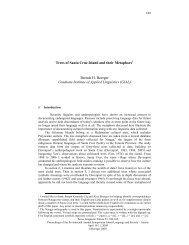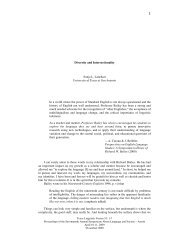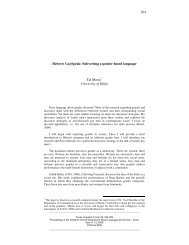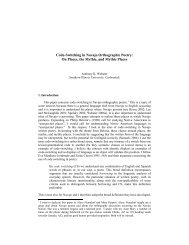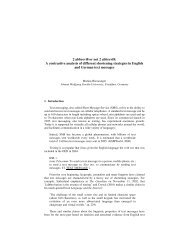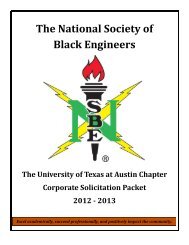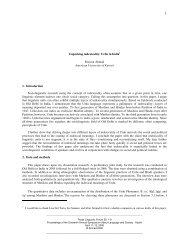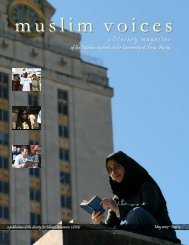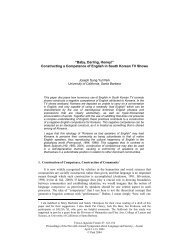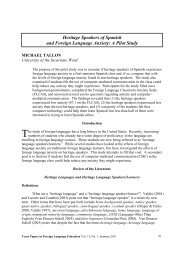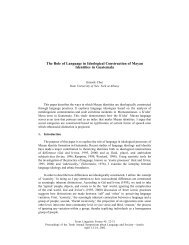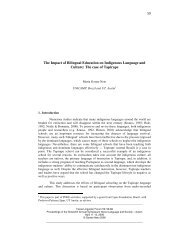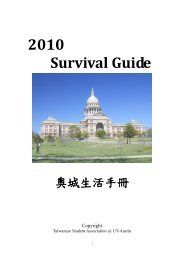Fractal Recursivity in Ideologies of Language, Identity and Modernity ...
Fractal Recursivity in Ideologies of Language, Identity and Modernity ...
Fractal Recursivity in Ideologies of Language, Identity and Modernity ...
Create successful ePaper yourself
Turn your PDF publications into a flip-book with our unique Google optimized e-Paper software.
96<br />
<strong>Ideologies</strong> <strong>of</strong> <strong>Language</strong>, <strong>Identity</strong> <strong>and</strong> <strong>Modernity</strong><br />
identity, modernity, <strong>and</strong> the nation. My dissertation attempts an untangl<strong>in</strong>g <strong>of</strong> these<br />
multiple <strong>and</strong> conflict<strong>in</strong>g ideologies, produced <strong>in</strong> <strong>and</strong> through Tlaxcalan discourses <strong>in</strong> these<br />
communities <strong>and</strong> their attempts at bil<strong>in</strong>gual school<strong>in</strong>g. I suggest that these ideologies are<br />
organized through the production <strong>of</strong> three discourses that have local, regional, <strong>and</strong> national<br />
expressions: the discourse <strong>of</strong> salir adelante, or forg<strong>in</strong>g ahead, <strong>and</strong> improv<strong>in</strong>g one’s<br />
socioeconomic position; menosprecio, the denigration <strong>of</strong> <strong>in</strong>digenous identity; <strong>and</strong> third,<br />
the pro-<strong>in</strong>dígena or pro-<strong>in</strong>digenous discourse that promotes a positive attitude towards<br />
<strong>in</strong>digenous people (Mess<strong>in</strong>g, <strong>in</strong> preparation). In this paper, I focus on a semiotic<br />
expression <strong>of</strong> this ideological diversity, through examples <strong>of</strong> fractal recursivity <strong>in</strong><br />
Mexicano <strong>and</strong> Spanish from this corpus, to highlight ways that Tlaxcalans construct<br />
multiple local ideologies <strong>of</strong> language, identity <strong>and</strong> progress through talk, as they seek to<br />
def<strong>in</strong>e “the self as aga<strong>in</strong>st some imag<strong>in</strong>ed ‘Other’” (Ibid:39). 1<br />
2. “Monte es una palabra que encierra la discrim<strong>in</strong>ación:” <strong>Recursivity</strong> <strong>and</strong> local<br />
reproductions <strong>of</strong> discrim<strong>in</strong>ation<br />
In this paper, I will analyze narrative <strong>and</strong> <strong>in</strong>terview discourse from four people who<br />
live <strong>in</strong> different parts <strong>of</strong> the county <strong>of</strong> San Bernard<strong>in</strong>o Contla. <strong>Fractal</strong> recursivity<br />
“<strong>in</strong>volves the projection <strong>of</strong> an opposition” from one level to another (Irv<strong>in</strong>e & Gal,<br />
2000:38). As Don Luis, a resident <strong>of</strong> a geographically marg<strong>in</strong>alized town <strong>in</strong> Contla says<br />
<strong>in</strong> his narrative (l<strong>in</strong>es 4-5), Mexicano speakers are on the fr<strong>in</strong>ges: “ti..puebler<strong>in</strong>os ti..ticateh,<br />
orillas” (we [are] small town folk, we are on the fr<strong>in</strong>ges). In this example, the<br />
opposition consists <strong>of</strong> an unequal relationship between <strong>in</strong>digenous <strong>and</strong> non-<strong>in</strong>digenous<br />
people <strong>in</strong> Tlaxcala <strong>and</strong> Mexico, which here is reproduced <strong>in</strong> Contla <strong>in</strong> the way that local<br />
identities are iconically mapped onto certa<strong>in</strong> towns <strong>and</strong> sections <strong>of</strong> the county. The<br />
projection <strong>of</strong> the opposition here is the discrim<strong>in</strong>ation felt by <strong>in</strong>digenous Tlaxcalans from<br />
outside communities, which is reproduced with<strong>in</strong> the county studied. The concept <strong>of</strong><br />
fractal recursivity <strong>in</strong>vites us to consider oppositions that can be reproduced <strong>in</strong> multiple<br />
social contexts.<br />
San Bernard<strong>in</strong>o Contla’s dozen county sections consist <strong>of</strong> both <strong>of</strong>ficial neighborhoods<br />
<strong>and</strong> politically <strong>in</strong>corporated towns which <strong>of</strong>fer rich opportunities for comparison. The<br />
speakers whose voices we hear <strong>in</strong> this paper are from the towns <strong>of</strong> San José Aztatla, San<br />
Felipe Cuahutenco, <strong>and</strong> Contla, the center <strong>of</strong> the county, known as the county cabecera (or<br />
head town). There is an association here between people <strong>and</strong> the l<strong>and</strong> on which they <strong>and</strong><br />
their families live <strong>and</strong>/or cultivate; there is a connection between geography, identity <strong>and</strong><br />
language, the ma<strong>in</strong> dist<strong>in</strong>ction be<strong>in</strong>g between centro (Contla) <strong>and</strong> monte (the mounta<strong>in</strong>/<br />
mount) (Nut<strong>in</strong>i, 1968). There is an ideology that be<strong>in</strong>g from the towns <strong>in</strong> the higher<br />
elevations <strong>of</strong> the county (“Ser del monte”) implies <strong>in</strong>digenousness, marked by greater use<br />
<strong>of</strong> Mexicano <strong>and</strong> greater poverty. An <strong>in</strong>formant expla<strong>in</strong>ed that the term monte “es una<br />
palabra que encierra la discrim<strong>in</strong>ación” (is a term that encloses discrim<strong>in</strong>ation); it <strong>in</strong>dexes<br />
a local identity “subord<strong>in</strong>ate” to the “dom<strong>in</strong>ant” one <strong>of</strong> the centro. Local ideologies work<br />
semiotically as people map dom<strong>in</strong>ant <strong>and</strong> subord<strong>in</strong>ate identities onto these local regions.<br />
1 For many conversations helpful to this analysis, <strong>and</strong> general support dur<strong>in</strong>g fieldwork <strong>in</strong> Mexico, I<br />
would like to thank José Antonio Flores Farfán, Elsie Rockwell, Refugio Nava Nava <strong>and</strong> Ramos<br />
Rosales Flores. For f<strong>in</strong>ancial support <strong>of</strong> my field research <strong>and</strong> data analysis, I thank the University<br />
<strong>of</strong> Arizona, the Fulbright Commission, <strong>and</strong> the Spencer Foundation. I am grateful to Susan Philips,<br />
Jane Hill, Hortensia Caballero-Arias <strong>and</strong> Kathe Managan for their <strong>in</strong>sightful comments on an earlier<br />
version <strong>of</strong> this paper.



